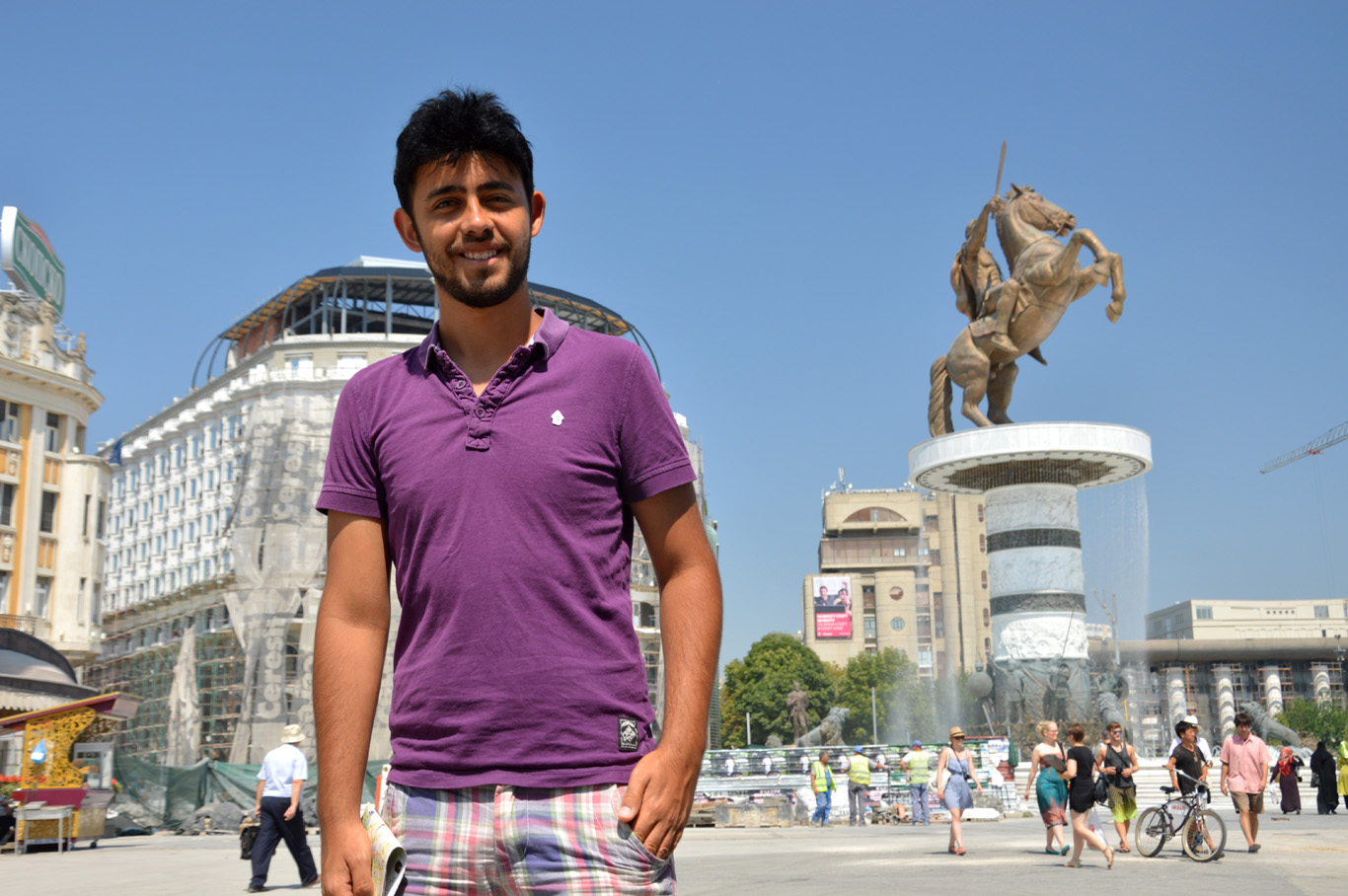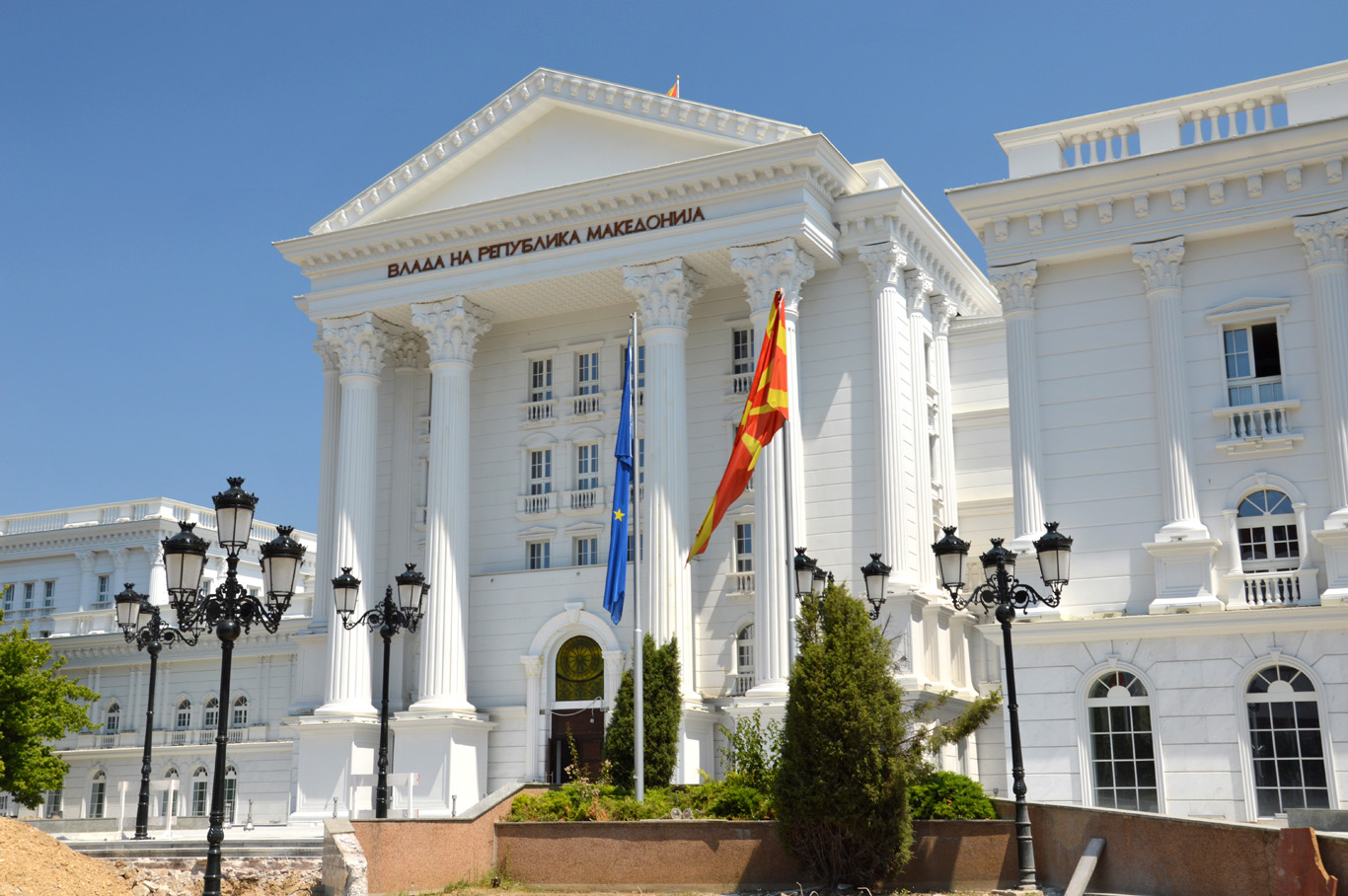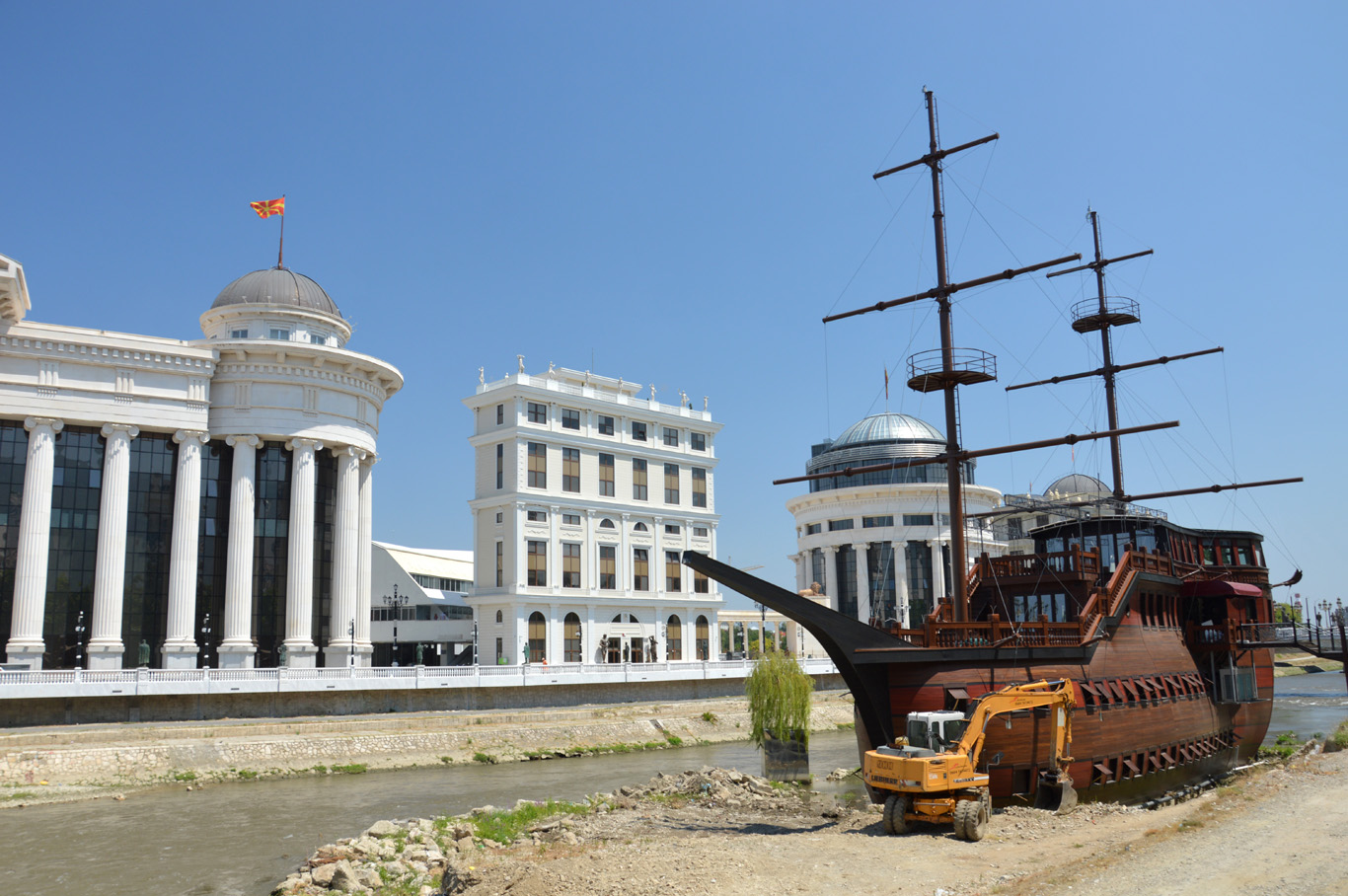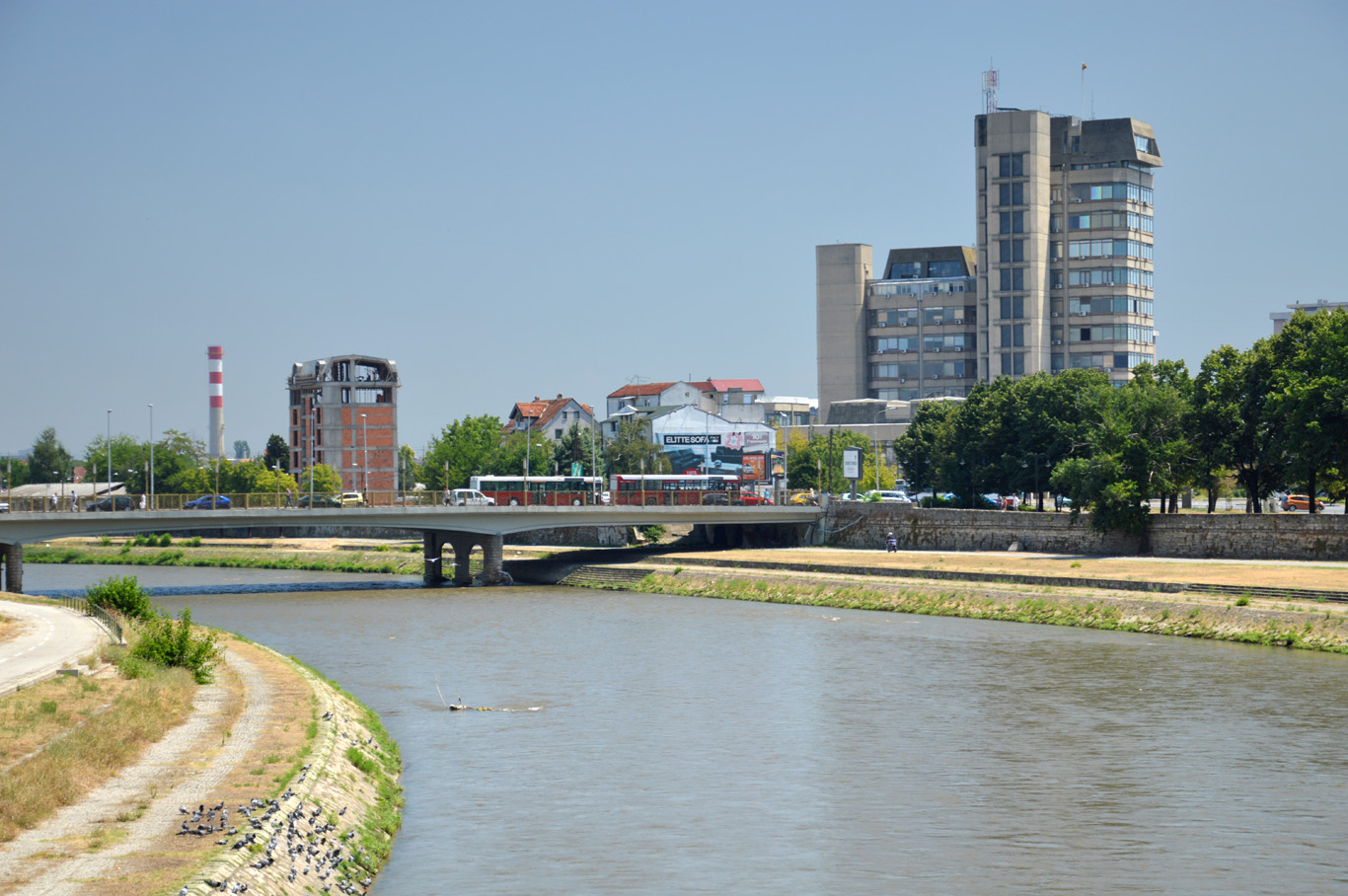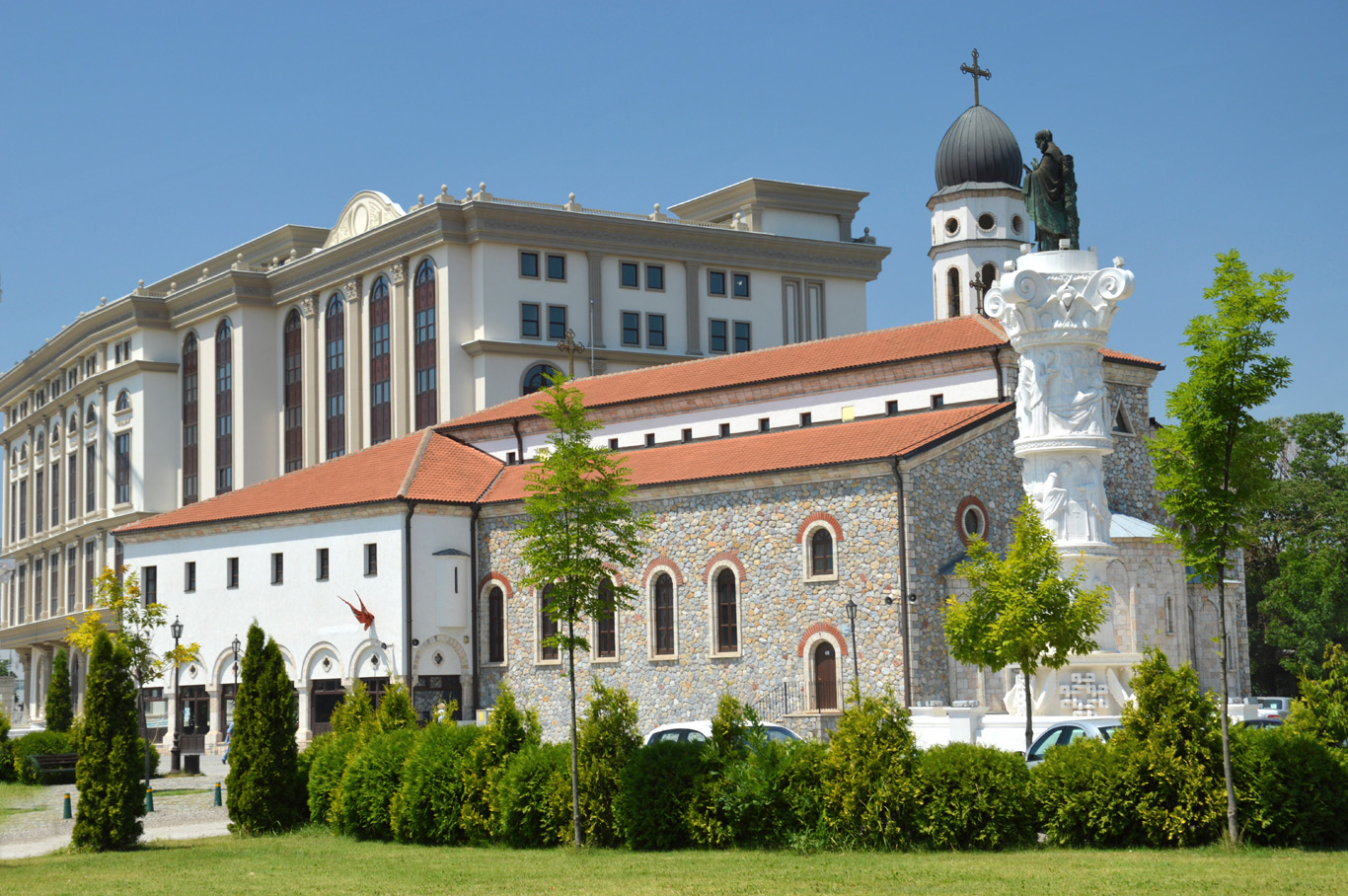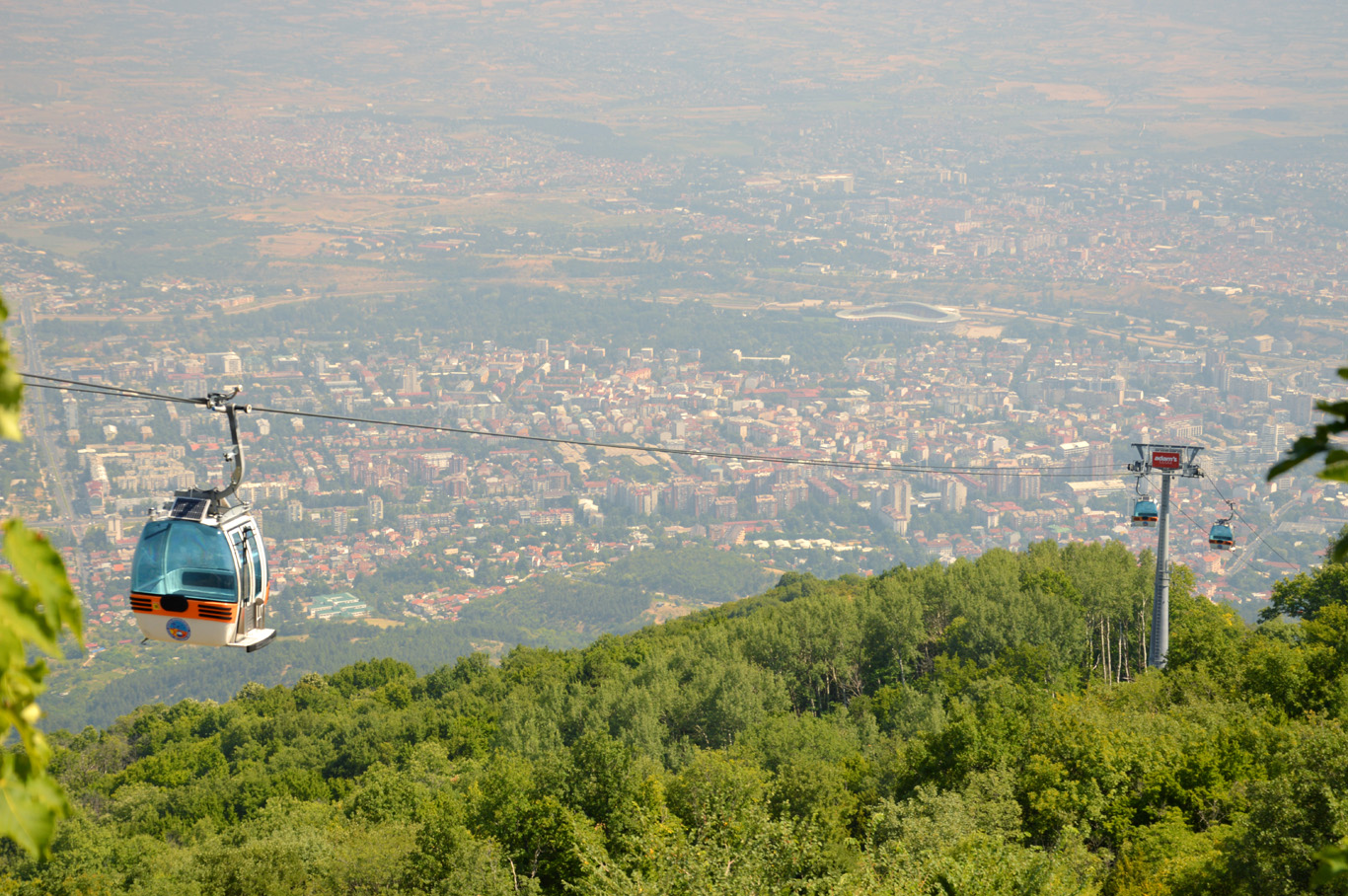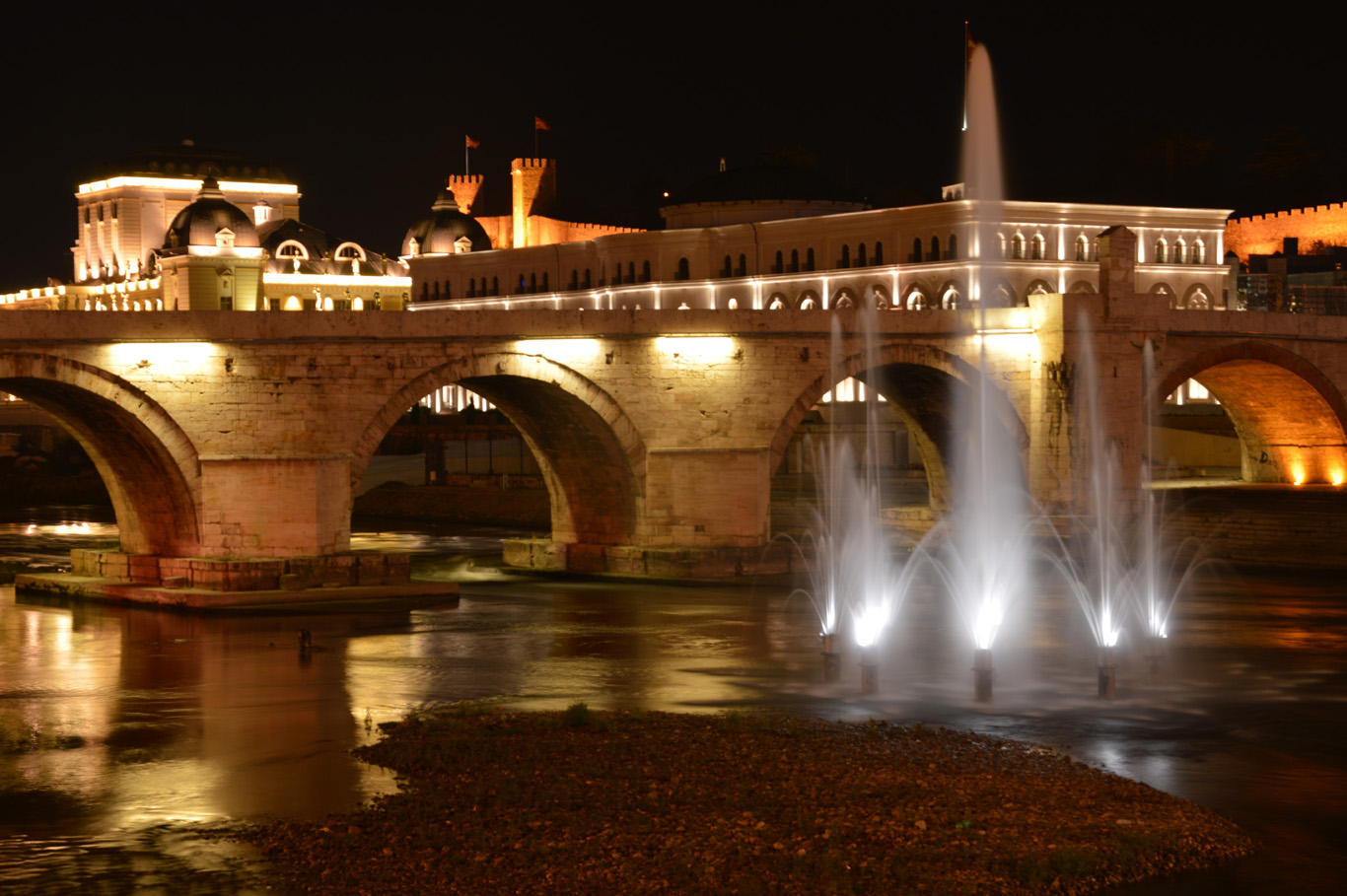Skopje was a different story. It wasn’t very welcoming at first. The grey, gloomy facade that consisted of communist era blocks defined its borders. At first, I thought the two days we had there were going to be a waste of time. However, I couldn’t be more mistaken. Don’t get me wrong – I wouldn’t say that Skopje is the most beautiful city in Europe, because it isn’t. But its charm was hidden in the fact that I have never seen such a diverse, crazy and chaotic city anywhere else in Europe.
Skopje – First Impressions
Because the Balkan Peninsula is filled with tiny countries, it’s not a problem to reach Skopje from any of them. We came here all the way from Belgrade on a night bus. It wasn’t the most pleasant journey – but still, we got safe and sound in our destination.
The gloomy, high-rise communist era buildings and messy streets dominated the skyline. The city was similar to Belgrade in this sense and although it was nearly 40 degrees Celsius outside, it had a cold feeling.
Our hostel was located quite close from the train station and the area seemed extremely dodgy, especially at night, when we arrived. In any of the cities in the west, walking through such areas would be pretty scary, but in Eastern Europe, as it turned out, it was way safer and it shouldn’t surprise you that ordinary, decent citizens live in this kind of run-down areas.
The locals, although they didn’t speak much English, were helpful enough to try to find the way to the hostel for us. When we saw families having some barbecues in their back gardens, our fear was gone as we kept walking down the dimly lit alley full of potholes till we reached the hostel.
The hostel was located in a brand new building that was pretty empty and had air conditioning which was so needed during the summer heat wave. The rooms had just been refurbished and all of them were of very good standards. The price for it was another pleasant surprise – around 10 EUR (12 USD) per person.
Skopje – the first night
We spoke to the staff in the hostel and were reassured that it is perfectly safe to walk around and it takes only around 20 minutes on foot to get to the city centre. We decided to go out right away, although we were extremely tired. But we were also equally hungry so we wanted to get to a place where we could find some restaurants.
We followed the river bank and the closer we were to the centre, the more surprised we got. Dark streets gave way to the imposing, wide pedestrian alleys, full of bars, clubs and restaurants. What was more surprising, the city was fully alive – and it was on Tuesday, past midnight. Whole families enjoyed their time out, were having meals and drinks in the outdoor diners. It was a similar feeling to what we had experienced in Kosovo’s capital – Prishtina (take a look at the article about Prishtina here).
But unlike Pristhina, Skopje seemed to be so much more glamorous around the center. There was no trace of the grey concrete blocks, now the monumental government buildings and museums built recently in classical style shone proudly illuminated with a wide range of colorful lights. Near the Macedonia Square, it was a pleasure to admire the statues, old stone bridge and the bustling nightlife. We thought we couldn’t be more shocked and then came the price of the meal we'd had – just like in Albania and Kosovo, we paid less than 10 EUR for an amazing dinner for 2 with 2 pints of beer!
Our joy was later a bit subdued by the hostel staff who explained to us that the government, instead of investing in economical progress, throws money into building those controversial monuments and museums along the river. They are supposed to be a tourist attraction and their goal is to impress foreigners. And, I must admit that, yes, they might seem completely out of place and they might not go together well with the surroundings, but… they make you stop and wonder. You can’t deny the originality and splendor attached to them.
However, as it turned out, all those brand new construcitons are an eyesore to the local population whose minimum wage is a bit more than 200 EUR (250 USD) per month…
Outskirts of Skopje
Apartment blocks in Skopje
St. Clement's of Ohrid Church
Brutalist architecture
Gate Macedonia
Macedonia Square - with the Warrior on a horse monument
Skopje under construction
Mother Teresa's birthplace
Graffiti on an apartment block
New Museum of Macedonia
Government building
One of the brand new buildings
Ship-restaurant
In modern Skopje
The other, old side of the river
Kale fortress
Kale Fortress - reminder of the Byzantine times
Old Bazaar
Turkish Baths
Old Bazaar
Old Bazaar
Carpets in the Old Bazaar
Church of St. Demetrius - right in front of Skopje
Another of the brand new buildings - in front of Bazaar
The Holy Mother of God Church (Sveta Bogurodica)
The Holy Mother of God Church (Sveta Bogurodica)
The Most Chaotic Capital in Europe
On the first night, we only saw the Macedonia Square and the monuments along the river. We had no idea, however, what’s hiding behind all that. Skopje is probably the most chaotic and diverse city I have ever been to (maybe only Beirut can match it).
The outskirts, as I mentioned before, are filled with the grey concrete blocks and heavy, brutalist architecture. Then, when you get to the city center; which resembles a huge construction site, with all the unfinished sites and ubiquitous holes, cables and cranes, you have get the impression that you ended up in some other place, on the other side of the continent. The brand new monumental buildings, made with what looks like white marble, surrounded by fountains, luxurious restaurants and hotels don’t match the other parts at all.
Then, a few steps away from the central area you’re in the ancient times from the Byzantine Empire. The Kale Fortress is the best example of those bygone times and you can feel as if you’ve been transported to the Roman era.
If that wasn’t enough, you just cross the Old Bridge from Macedonia Square to the other side and in a minute, past the white government buildings, you are in the old bazaar. Narrow, little streets remind of Middle Eastern towns and the mosque minarets as well as the Turkish baths want to confuse you into thinking you’re not anywhere else but in Turkey.
The old bazaar is in turn, surrounded by churches which have a look typical for other locations in Southern Europe. While walking around Skopje, you can genuinely feel like you’re in Eastern Europe, Italy, Spain, Turkey, Greece and Croatia - all at the same time.
The different districts, although interweaving with one another, also have a very distinct, authentic atmosphere, so it does make you believe that you’ve just crossed a border to a different era, different land and different culture. This is what makes Skopje unique in this chaos – and also extremely interesting and surprising!
What to see in Skopje
Here is a quick overview of the things we saw in Skopje – they are all close to the center (except the Millennium Cross), so it’s easy to just walk around and enjoy the city:
- Monuments. Skopje is a phenomenon when it comes to monuments. If you love this type of art, Skopje would be your favorite city! Nowhere else I’ve encountered so many crazy, different monuments and statues – for example: the divers jumping into the river, the shoeshine boy, the beggar or the city’s most famous monument – Warrior on a horse which is supposed to depict Alexander the Great.
- Macedonia Square – the central part of Skopje, filled with restaurants and the place of the Warrior on a horse monument. Located just at the southern bank of Vardar River, it’s a good place to start exploring Skopje. Many buildings are being reconstructed after having suffered damage during the 1963 earthquake.
- Porta Macedonia – the Macedonia Gate – a triumphal arch leading to Macedonia Square – unlike in other cities, the arch is brand new (completed in 2011). Dedicated to Macedonia’s 20 years of independence, cost (according to Wikipedia)… over 4 million EUR!
- Birthplace of Mother Teresa – You know Mother Teresa of course, however I doubt you knew she was born in Skopje! Yes she was, and she was also Albanian. You can visit her birthplace here, it’s located near the Porta Macedonia.
- The monumental buildings and constructions along the river: the seat of the government as well as numerous museums built in classical style. Extravagant, controversial, glamorous and tacky at the same time. With fountains and ship-restaurants. But you just must see them – they’re impossible to miss! If the triumphal arch cost 4 million EUR, imagine how much money the government must have spent on those…
- The Old Bazaar – the bazaar is located on the opposite side of the river to Macedonia Square. Here, you can buy carpets, oriental spices, enjoy Turkish and Middle Eastern food and feel like you’ve just crossed the border to Turkey.
- Stone bridge – built on Roman foundations, in the 15th century by the Ottomans. Leads to the Old Bazar.
- Kala Fortress – the fortress overlooks the river, the monumental white buildings and the old Bazaar. Some good views from the top – however it was closed for reconstruction when we visited Skopje. It dates back to the Byzantine times.
- Modern Skopje – the “ugliest”, modernist and brutalist Skopje. Although, people usually don’t like this type of architecture, it is interesting; nevertheless, it’s a witness to all the history and changes the city went through. You can find some crazy monuments and structures here.
- Churches: Skopje also has interesting churches. One of them, with unique, modernist architecture is the Church of St. Clement of Ohrid. Built in the 80s, it consists of four enormous domes, is located in the modern part of Skopje, to the west of the Macedonia Square. Other churches are situated, surprisingly, around the old Ottoman bazaar – the church of St. Demetrius (16th – 19th century) and church of Sveta Bogurodica (Holy Mother of God). They look like typical churches somewhere in Italy or other parts of Europe.
- Millennium Cross – the Cross on the hill overlooking the city. You can take a cable car or bus to the top. It’s also possible to hike there. Although I love hiking and mountainous views, it was the most disappointing place in Skopje. The view isn’t great due to smog and there are not many activities on offer around. If you don’t have too much time, you can skip it with no regret.
Diver's monument
Beggar monument
Skopje - City of monuments and statues
"Shoeshine children" monument
Statues in Skopje
Millennium Cross
The view from the top of the hill with the Millennium Cross
Old Stone Bridge at night
Skopje at night
Alexander the Great statue
Outside Skopje
There’s a beautiful place near Skopje – perfect for a day trip – Matka Canyon. You can do some kayaking or just enjoy your time hiking and admitting the nature. As Macedonia is small, don’t miss Ohrid – it’s a beautiful town with unique architecture located at the Lake Ohrid. To find out more information about Matka Canyon and Ohrid, take a look at the “Related Posts” section below.
If you liked this article, you can also download it via the GPSmyCity app - you will be able to gain access to the guide, which will direct you to all the attractions described above, even if you're offline. Download it here.
Author: Tom @ Adventurous Travels
Related Posts
Copying without permission is not allowed. If you wish to use any of the site's content (photos or text) or work with us, please contact us.
We welcome questions, advice, support or criticism. However, spam comments will be removed.







